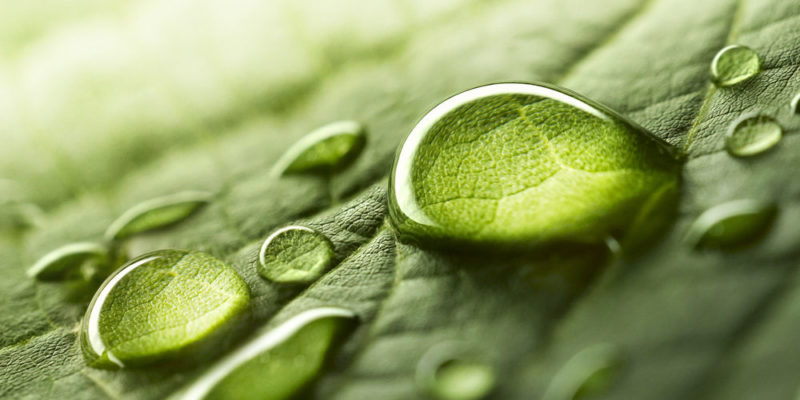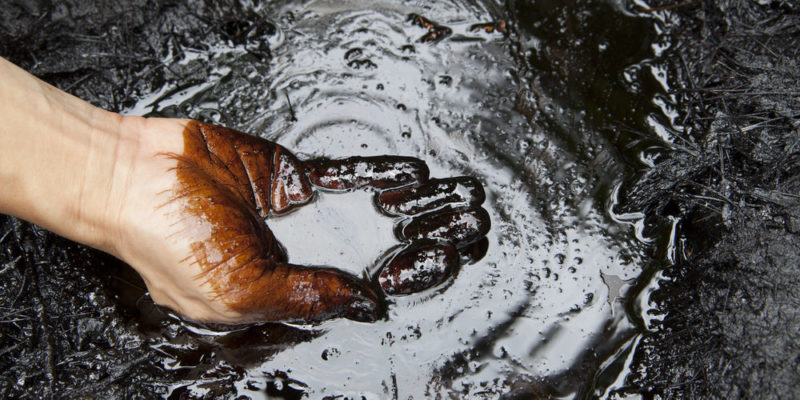We explain what liquids are and the changes in state they present. Also, what are its general characteristics and examples.
What are liquids?
Liquids are substances that present a specific state of aggregation in which their particles are close enough together to maintain a minimum cohesion (not as much as solids , but much more than gases ) and loose enough to allow at the same time the fluency.
This state of matter is usually considered an intermediate point between solid and gaseous things , and is generally the result of the application of energy in the form of heat to solids (fusion) or the subtraction of energy from gaseous ones (condensation) . Another possible way for this is the variation of pressure conditions. In any case, the particles of a liquid are halfway between the rigidity of the solid and the dispersion of the gaseous.
Liquids are difficult to compress and lack a certain shape , as well as having unique properties such as surface tension (energy that must be applied to increase its surface area). Many substances are liquid in their natural state (like water ), while others can be liquid only under specific conditions of temperature and pressure.
Characteristics of liquids

- Form . Liquids lack a defined shape, so they acquire the one that their container imprints on them. The water in a glass will be shaped like a glass.
- Flowability . Fluidity is one of the main characteristics of liquids and gases, which determines their ability to leave one container in favor of another through narrow ducts or in a variable shape, since the particles of substances in these states of aggregation lack shape memory, that is, they do not have a certain shape, like solids.
- Viscosity . Viscosity is the resistance to flow exerted by the internal forces of a liquid, which slow down more or less its deformation when it is poured out of its container or when it is started. The most viscous liquids (such as oil , tar, etc.) flow slowly because their particles adhere more to each other when they rub against each other; while low-viscosity liquids (like water) flow much faster.
- Adherence . Liquids have an intrinsic ability to adhere to other substances and surfaces, which can be evidenced by the droplets that remain on objects sprayed with water or on objects that are immersed in a liquid. Things get wet due to this particular phenomenon of liquids.
- Surface tension . The surface tension is a property of the particles of the liquid that prevent to increase its surface. A liquid is capable of resisting the penetration of objects up to a certain margin, functioning as an elastic layer. For this reason, certain insects can "walk" on the surface of the water or the fallen leaves can remain on it without sinking.
- Capillarity . This property of liquids depends directly on their surface tension and allows them to ascend or descend through a thin tube that is immersed in a container filled with the liquid. This is due to the volume displacement of the liquid, which resists penetration of the tube and moves within it. A clear example occurs when we insert a straw (straw, straw, straw, etc.) into a glass of water and observe the liquid flow inside it to levels even higher than those of the water in the glass.
- Density . Density is the mass per unit volume of the liquid. The density of liquids is much lower than that of solids, for example, which resist deformation and exhibit brittleness; On the other hand, liquids can "break" into always equal particles of the same liquid.
State changes
From liquid to gas

- Evaporation . When heat energy is applied to a liquid (as when heating water), its particles are forced to move more quickly and to expand the space between them, slowly becoming a gas. This process occurs slowly and gradually and the temperature does not necessarily have to be higher than its boiling point.
- Boil . When a liquid is heated until its temperature is higher than its boiling point (such as when boiling water), then its particles move much faster and go into the gas phase.
- Solidification . When pressure is applied to a liquid, the movement of its particles is slowed or stopped, which increases the interactions between them forcing them to form fixed structures (such as crystals) that form a solid.
- Freeze . When a liquid is cooled by extracting heat energy (as when freezing water) until its temperature is lower than its freezing point, the movement between its particles is decreased, increasing the formation of more rigid structures and thus passing to the solid phase.
Solid to liquid
- Merger . Heat is introduced to a solid object to allow its particles to overcome the rigid structure of the whole and move more quickly, expanding the space that separates them and flowing towards liquidity. If this liquid then cools, the reverse process will occur.

- Condensing . It occurs when the particles of a gas come into contact with a cold surface (or colder than the gas), which causes the appearance of liquid droplets on the surface, evidence that the gas has turned into a liquid.
- Liquefaction . Another process to convert gases into liquids, but that does not use temperature but pressure: the pressure to which the gas is subjected is increased until it is greatly compressed, forcing its particles to get closer than they normally are and thus becoming in liquid as long as pressure conditions are maintained.
Examples of liquids

Examples of liquids. The most abundant liquids in nature are water (H 2 O), oil, earth magma or lava (highly viscous), the blood of higher animals and the sap of trees .
The above content published at Collaborative Research Group is for informational and educational purposes only and has been developed by referring reliable sources and recommendations from experts. We do not have any contact with official entities nor do we intend to replace the information that they emit.
She has pursued her studies in The United States, where she has graduated in Business and Economics and is currently finishing her Master studies in International Economics and Finance. Miss. Amputee is fluent in three languages: English, Spanish and Russian and has elementary knowledge of French and Italian. She love exploring how Collaborative Research Group can become the best tool to achieve the (necessary) educational change. .
Leave a reply
Your email address will not be published. Required fields are marked *Recent post

Sport: What Is It, Types, Risks, Features, Characteristics and Examples

Dogs: Emergence, Features, Characteristics, Feeding and Breeds

Story: Definition, Elements, Structure, Features and Characteristics

